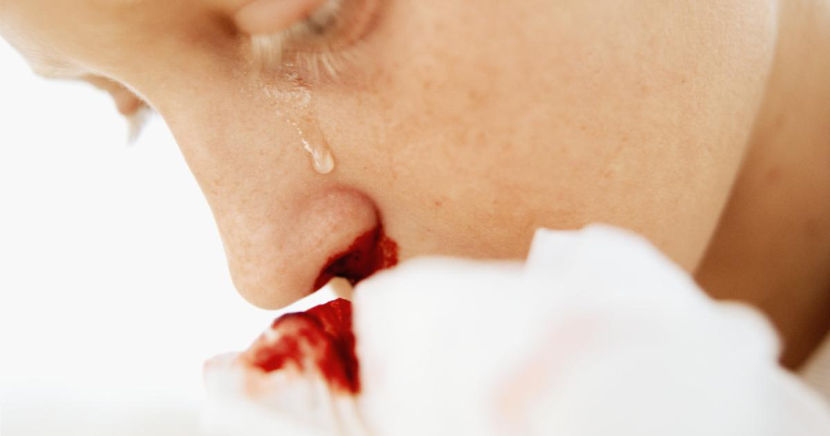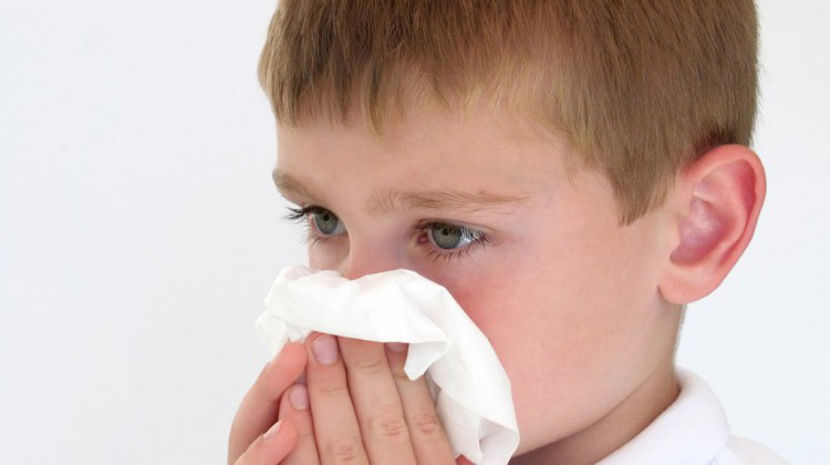
All the epistaxis o nosebleeds they are very cumbersome, but usually they are not serious. Although the causes are diverse, some children are more prone than others. However, despite being something that we can all frequently encounter, educators and caregivers included, it is one of the situations that we face the worst. And is that most people do not know how to properly care for a nosebleed.
Next I am going to tell you what should be done, what not and why. So that you realize how important this topic is, I'm going to tell you something: nosebleeds should not be plugged. Putting a plug and putting your head back is the worst thing you want to do. What's more, it can be very dangerous.
Why nosebleeds or epistaxis occur
Nosebleeds are very commonSince the nose contains a large number of small blood vessels that can easily break under certain circumstances. For example, air moving through the nose can dry out and irritate the membranes that line the inside of the nose, and scabs can form that bleed when irritated. This must be taken into account when the environment is very dry, especially with children who are especially sensitive to epistaxis.
Most of these bleeds occur in the front of the nasal septum, and fairly easy to stop. They can also appear high on the septum or deep in the nose, although less frequently. These bleeds can be more difficult to control. In any case, despite its cumbersomeness, nosebleeds are rarely life-threatening.
Nosebleeds can be caused by irritations (allergies, colds, sinus problems, sneezing), from cold or dry air, from blow your nose loud or poke at it, for a lesión or fracture, by a object that obstructs the nose, by having the septum deviated or by abuse of aerosols, mainly.
Keep in mind that repetitive nosebleeds can be a symptom of disease (although not necessarily), so if they are repeated very frequently it is important to consult with your pediatrician.
How to deal with a nosebleed
Acting on a nosebleed is very simple, but two things are required: tranquility y patience. It is essential to remain calm and take time to attend to her.
At first I said that nosebleeds don't stop when the blood starts to gush out. If people do it, it is not only due to ignorance of the consequences that this can have, but because the two ingredients that I just said are usually missing, I insist, tranquility and patience.
We are going to see step by step how to act before an epistaxis and I am explaining everything calmly.
Step # 1 - Place the child's head forward
Yes, forward, and let the saber come out. Place something underneath to collect the blood, and calm the child. Tell him nothing is wrong. And calm everyone around.
If they see you safe and calm it will be easier. But since this is the opposite that has been done all your life, you may have to stand up (or send someone to f * ck, which also works, even if it is not politically correct). And if you want, later, you explain why the head does not tilt back.
Tipping your head back can have significant consequences. When placing the since blood flows to the back of the throat, which can cause coughing or even obstruct breathing. Also, a blood clot in the throat is not exactly the most comfortable thing in the world, especially if the child is a bit of a brat.
Step # 2 - Gently blow your nose
This may seem surprising, but it is very helpful, because blood begins to clot, and those clots accumulate. With snot, clots become especially large. Also, the child's first reaction is probably to put his head back, and they will be forming in the deep part of his nose. Gently blowing your nose removes these debris.
What happens if you put a plug? That those nasty clots start to form again that will have to go somewhere, either inside or outside, and will leave dried traces of blood in the nose that, most likely, will cause another epistaxis a few hours later.
Step # 3 - Gently press down on the soft part of the nose
Gently press down on the lower half of the child's nose (the soft part) between the thumb and forefinger, and hold for ten minutes with the head in a neutral position or looking slightly downward. I already told you that you had to be patient.
Sometimes it takes a little more time, and it is also possible that you will have to blow your nose sometime more. In any case, if it has not stopped after 20 minutes, it will be necessary to contact a doctor.
Teach your child what to do
If your child has frequent nosebleeds, explain what to do and why. You will not always be there to serve him and you will help him take it easy. The little ones get very nervous about this.


